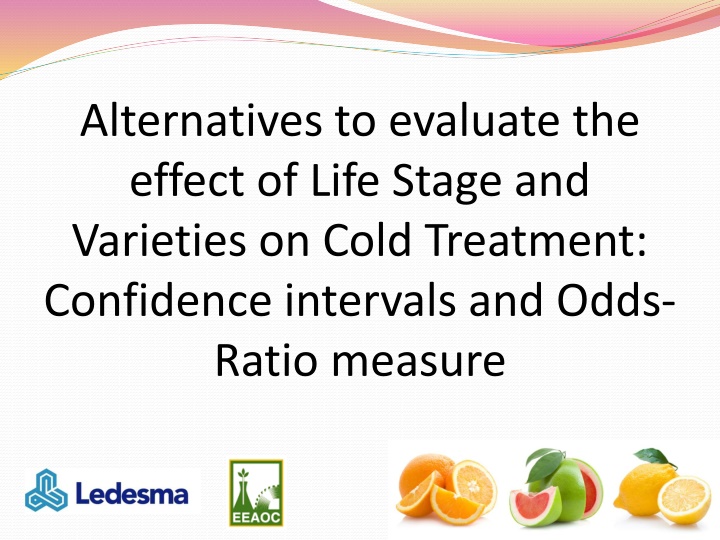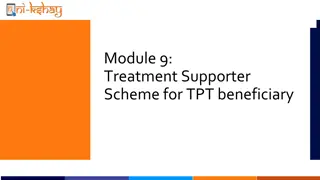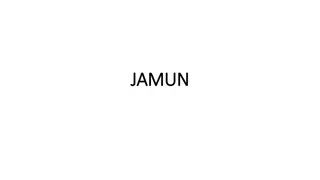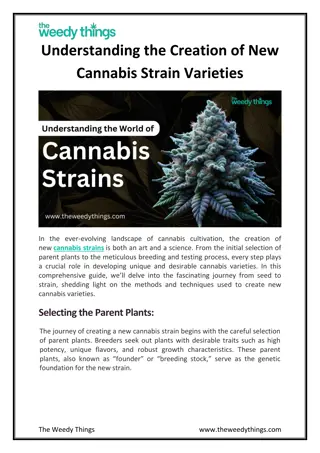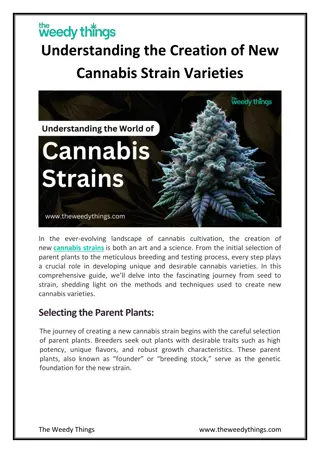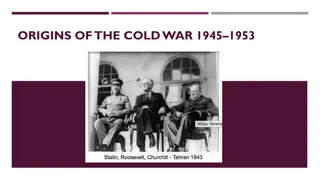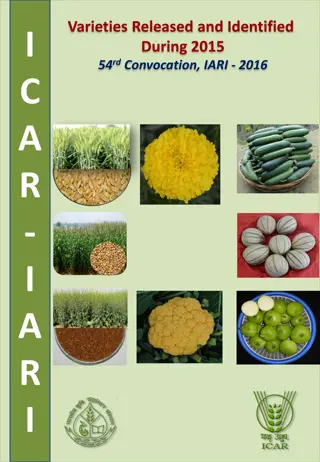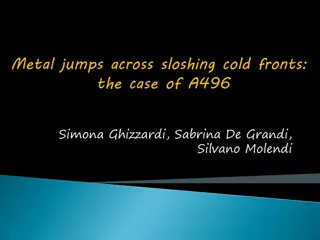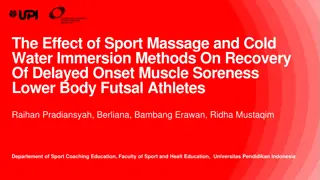Evaluating Life Stage and Varieties in Cold Treatment
the impact of life stage and varieties on cold treatment using confidence intervals and odds ratio measures. Harmonize procedures for comparison, determine lethal dose levels for MTLS, and delve into dose-response models and link functions. Consider various selection methods for model analysis, delve into the Probit model for binomial data, and estimate LD50 using Probit software.
Uploaded on Feb 17, 2025 | 0 Views
Download Presentation

Please find below an Image/Link to download the presentation.
The content on the website is provided AS IS for your information and personal use only. It may not be sold, licensed, or shared on other websites without obtaining consent from the author.If you encounter any issues during the download, it is possible that the publisher has removed the file from their server.
You are allowed to download the files provided on this website for personal or commercial use, subject to the condition that they are used lawfully. All files are the property of their respective owners.
The content on the website is provided AS IS for your information and personal use only. It may not be sold, licensed, or shared on other websites without obtaining consent from the author.
E N D
Presentation Transcript
Alternatives to evaluate the effect of Life Stage and Varieties on Cold Treatment: Confidence intervals and Odds- Ratio measure
Objetive Harmonize procedures for comparing life stage tolerances and the effect of varieties / species. Answer the question: Which lethal dose levels will be used to determine MTLS?
Dose-Response Models This model are used for bioassay results The aim is to describe the probability (proportion or percentage) of sucess (i.e. control, mortality, survival) as a function of the dose (exposure time, temperature, etc) Three commonly used models: Probit model Logit model Complementary log-log (clog-log) model
Link function for models The link function is a transformation of the response in order to linearize the realtion between response (p) and dose (x) or logarithm of dose Model Link function Model ecuation = + 1 1 ( p ) x (p ) Probit 0 1 p p = + log log x Logit 0 1 p p 1 1 = + log[ log( p )] x 1 log[ log( p )] 1 Clog-log 0 1
Model selection Selection can be done using any goodness of fit statistic: -2 log (maximum likelihood) Pearson 2 Pseudo R2 AIC Selection should be performed in each different bioassay Replications should be including in the analysis (replications normally improve the fit)
Probit model First use in binomial data was in 1934 (Bliss) For nearly 40 years employment tables and interpolations to convert percentages or proportions of controlled individuals, obtaining graphics where it was expected to have a more or less linear relationship between dose and probit Probit analysis can be done by eye, through hand calculations, or by using a statistical program (SAS,SPSS, R, S, S-Plus, EPA (IBM), TOXSTAT, ToxCalc, Stephan program). Most common outcome of a dose-response experiment in which probit analysis is used is the LC50/LD50/LT50 and its respective intervals.
Estimated LD50 using Probit softwares
Little et al, 1998. Environmental Toxicology and Risk Assessment
Estimated LD50 confidence intervals using Probit softwares
Origins of differences Control Treatment (Dose=0): included or not in the analysis. Mortality: corrected or not? Parameters estimation: least squares methods or maximum likelihood? Confidence intervals: how are calculate?
Corrected mortality Data will be corrected if there is more than 10% mortality in the control (???). Corrected mortality: m control m = M obs 1 corrected control m
Egg Stage First and Second Larvae Stage Third Larvae Stage Dose Size Live Dose Size Live Dose Size Live 0 280 264 0 420 269 0 280 262 1 280 206 3 420 134 4 280 253 2 280 141 4 420 75 5 280 220 3 280 64 5 420 32 7 280 127 4 280 31 7 420 4 10 280 7 7 280 0 10 420 0 12 280 0 10 280 0 12 420 0 14 280 0 12 280 0 14 420 0 0 280 242 14 280 0 0 420 256 4 280 237 0 280 263 3 420 59 5 280 232 1 280 208 4 420 44 7 280 128 2 280 150 5 420 37 10 280 1 3 280 60 7 420 25 12 280 0 4 280 31 10 420 0 14 280 0 7 280 0 12 420 0 0 280 242 10 280 0 14 420 0 4 280 239 12 280 0 0 420 259 5 280 236 14 280 0 3 420 76 7 280 138 0 280 263 4 420 74 10 280 3 1 280 208 5 420 54 12 280 0 2 280 134 7 420 11 14 280 0 3 280 65 10 420 0 4 280 22 12 420 0 7 280 0 14 420 0 10 280 0 12 280 0 14 280 0
Best Model Selection Stage Model Intercept Dose AIC LD50 SE (LD50) Probit -1.4876 0.7043 81.33 2.112 0.0364 Egg Logit -2.5261 1.2011 83.08 2.103 0.0363 clog-log -1.9627 0.7213 101.22 2.212 0.0417 Probit -0.63 0.3328 160.09 1.893 0.1531 First and Second Larvae Stage Logit -1.3594 0.634 171.99 2.144 0.1279 clog-log -0.7259 0.2651 154.7 1.355 0.205 Probit -4.8999 0.6963 106.51 7.037 0.0511 Third Larvae Stage Logit -9.0664 1.2914 109.67 7.021 0.0492 clog-log -6.0744 0.7703 146.44 7.401 0.0573
Logit model Logit is another form of transforming binomial data into linearity and is very similar to probit. In general, if response vs. dose data are not normally distributed, Finney suggests using the logit over the probit transformation (Finney, 1952). + x e + p 0 1 = = + p log x + x 0 1 e p 1 1 0 1
Odds Indicates how likely it is a success to occur in respect to not happen: p ( p success ) p ( success ) = = Odds ( failure ) p ( success ) 1 + ix = Odds ( x ) e i i
Odds Ratio + Odds ( x ) 1 = e i i Odds ( x ) i + ( . SE ) ( . SE ) 1 96 1 96 = Odds Ratio 95% Wald Conf. Interval ( e , e ) i i i i If the CI is under 1, there is less probability of success in (x+1) respect to x If the CI contains 1, there is no diference in the probability of success in (x+1) respect to x If the CI is above 1, there is more probability of success in (x+1) with respect to x
Multiple Logistic Model p = + + log * Time * Stage 0 1 2 p 1 If define o for eggs and 1 for larvae (first and second stage). Intercept Time Stage Est. SE Est. Se Est. SE Egg vs. Fisrt and Second Larvae -1.89855 0.07811 0.93225 0.02815 -0.64325 0.07522
Odds Ratio p ( mortality / larvae ) Odds ( larvae ) p ( survive / larvae ) = = = . 0 64325 e . 0 5256 p ( mortality / egg ) Odds ( egg ) p ( survive / egg ) = Odds Ratio 95% Wald Conf. Interval ( . , . ) 0 4535 0 6091 This can also be used for varieties!!!
